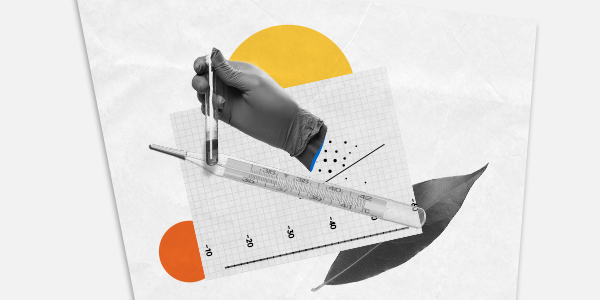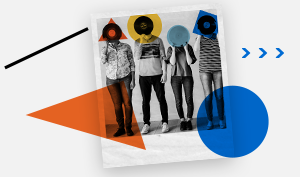
Dilip is Professor of Marketing at Rotman and holds the Canada Research Chair in Behavioural Science and Economics. He is the Director of the Behavioural Economics in Action Research Centre (BEAR), and is the Director of the Behaviourally Informed Organizations Partnership Grant. His research is in the area of behavioral economics and its applications to consumer wellbeing, marketing, and policy. In 2016, he was appointed to the Privy Council Office in the Canadian Federal Government as a scholar-in-residence and continues to serve as policy advisor in Impact and Innovation Unit in Ottawa. He also serves on Impact Canada and the Financial Consumer Agency of Canada’s research advisory boards. He is the author of The Last Mile: Creating Social and Economic Value from Behavioural Insights.
In this conversation, Kelly and Dilip discuss how behavioral science can inform COVID-19 responses, and how it is resulting in a focus on digital transformation for educators and organizations alike.

Kelly Peters: What research have you seen or been engaged in around making contributions to making sense of COVID-19?
Dilip Soman: I a lot of people ask me this question; how does your research help us better tackle COVID-19? What part of the research helps you do it? My answer is everything and nothing at the same time. Let me try to unpack that a little bit: I do believe that a lot of what I study, things like behavior change, nudging, and mental accounting are all potentially useful tools to help us steer behaviors in the appropriate direction – be they in the domain of wearing masks, or social distancing, or complying with other elements of the health guidelines, or even making sense of data – but one of the biggest points that I've tried to make over the last couple of years is the importance of context.
We need to be careful of not simply treating our research in the journals as an off the shelf solution. Just because I showed in a 2010 paper that A causes B doesn't mean that A is always going to cause B.
Let me give a quick example of the kinds of things that I'm working on, which is the idea of conflicting information. This is particularly true in the United States and we saw a little bit of this in Canada in the early stages of the pandemic. Minister A would say “go away and enjoy your March Break”. Minister B said, “wear a mask, stay inside, social distance”. We've often heard conflicting pieces of evidence and these have often been in the domain of science. We've had a paper that shows that Hydroxychloroquine helps COVID resistance and another paper that shows it hurts COVID resistance.
How do I make sense of these pieces of data? You could actually start hypothesizing many things. There's an averaging model where the average consumer says, “this one showed a positive effect, that one showed a negative effect, so maybe, overall, has no effect at all”. Or there could be a trust issue. Paper A was written by Kelly, whom I trust, paper B was written by someone I don't know, and so I go with who I trust. Or you could have anchoring and adjustment where I rely first on the evidence that I see first, and then I keep updating that.
We've been actually trying to tease apart which of these three things happens. Early results suggest that it's actually none of these. It’s a distrust model: these guys can't even get their act together, so why should I believe any of them? That's a slightly frightening thing to find out. I don't say this as a definitive conclusion, but that's one stream of research.

Kelly Peters: We've been looking at the challenges of digital transformation for well over a decade. Digital Transformation includes everything from having that hybrid and cross channel approach. I recently had a very interesting conversation with a retailer about her challenge in digital transformation and I'd love to hear your point of view on that. She said that dealing with Amazon, for instance, has been her stress over the last five years; figuring out where their brand fits in with Amazon, both as a distribution partner and as a competitor and a new competitive set.
COVID-19 has now shifted the retail business distribution channel because now consumers are also thinking, which channel do I feel safest in? This is now changing that option set yet again. I'd love to hear the kinds of things that you're thinking about around digital transformation.
Dilip Soman: Let's start with the basics. If I go back and look at the question of the competition with Amazon, clearly, the marketing 101 response is your value proposition needs to be so compelling that this whole notion of channel choice, and then which product should I choose, should essentially be a trivial decision for the consumer to make. The bigger question is how do I actually make that value proposition compelling?
I'm going to start with a tennis metaphor. Here's my simple quiz question for everyone who's listening in: what's common to Jimmy Connors, John McEnroe, Peter Sampras, Martina Navratilova? Not only were they all great tennis players, Grand Slam winners, but none of them won the French Open. I remember watching a documentary on John McEnroe about 10-15 years ago when he was asked about this. He said, “the single biggest mistake I used to make when I played at the Roland Garros was that I brought my hardcore game to clay. It's a different surface. As the conditions changed, I knew I should have changed my game, but a part of me just couldn't do it. I would just serve and run in. That's just the way I was hardwired.” I think we're often, as business people, as educators, doing that when we digitally transform. Let me be specific. I think the mistake we're making is we're essentially trying to recreate our physical world online. I think that's a big mistake.
I think understanding the capabilities of the playing field, and how they're different, should allow us to enhance the entire model. I think this is the same for all kinds of things, like wealth management or financial advice. As a financial advisor, you're normally constrained to giving information sequentially about different products and services. Now online, you could do things simultaneously; you could actually co-create that discussion, allowing you to interrupt and you can pause and say, “Here are three ways I could go. Click on a button, tell me which one you want to hear first.”
I guess long story short is we need to learn to play the clay court game. That essentially means understanding the complexity of the difference in the environment and the context.

Kelly Peters: The for-profit education sector has been working at online education for many, many years. We're all bringing traditional academies online because we have to, but there's been for-profits that have been innovating and serving in that space for quite some time. They face challenges. The student populations are different. In an advanced MBA course with people that have their mind on certain careers that they're trying to mobilize themselves into, or upskill, or enhance, or augment their prior academic work, many of the students are experienced professionals. So, they have a different set of life challenges.
Where much of the for-profit education sector has tried to serve the underserved community in the education space, that's presented some really complicated challenges. Things like graduation rates in the online model. Now, potentially, it is profitable to serve these geographically disparate populations without the overhead cost of brick and mortar teachers. They are able to serve larger groups and have assistants help with things like grading and student support. Nevertheless, those graduation rates are tough to achieve. Some of that is because they don't have that level of interactivity between the teacher and student. Some of it is the student behaviors and practices aren't as demanding.
What would be some of the things that you would think about to help that sector be able to use this pandemic as a chance to grow?
Dilip Soman: A few things. I've been teaching an online course, BE 101x, for about eight years. It's taken on a life of its own. I remember when I started doing that, I wasn't quite sure how long it was going to continue. Dan used to teach a course on Coursera at that point in time. Now, about 280,000 registrations later, every time the course comes to a close, I get a flood of messages saying put it back on. So, it's still there.
One of the things I learned, obviously, was the low completion rates that you talked about. Initially, I used to read all of this research on MOOCs and the fact that if you end up with a 1% completion rate, you should be happy. Maybe no more than 10% of people will complete all of your modules. I accomplished that. I guess one easy thing would have been for me to say, “Okay, I'm happy I've met the benchmarks,” but I tried to find out a little bit more.
One of the things I learned was, in my MOOC, for example, there were certain parts of the world where the completion rates were particularly low; as in, people didn't finish the exams that they needed to finish to get a certificate. But these were also the parts of the world where I used to get the most engagement from; the best questions, the best “Professor, here's what I'm working on, and how would behavioral science help me?” kind of questions. I ended up traveling to some of these countries over the past eight years. I've met with some participants from the MOOC. I learned that they actually didn't care about the certificate. It wasn't why they were there. They wanted to actually get useful knowledge. As long as they got that, they didn't care about finishing the course.
We've tried to adopt our university type metrics to a lot of these digital education platforms. We've said, in university, you're successful if you finish a course, if you get a report card, if you get a diploma. I actually don't think that's true in the digital world.
We've got to think about the heterogeneity in what the educational goal is. Again, this is where technology can help design a course, for example, that has the same basic frame, it's the same content, but you can put people through different pathways through that content. I'm actually working on one right now. There are people who are slightly more senior who know the basics. There are some people who are there to learn the basics and just the content. There are some who want to do their jobs differently. My approach is a lunch buffet approach. You put out a platter of different things, and you guide people through it.










